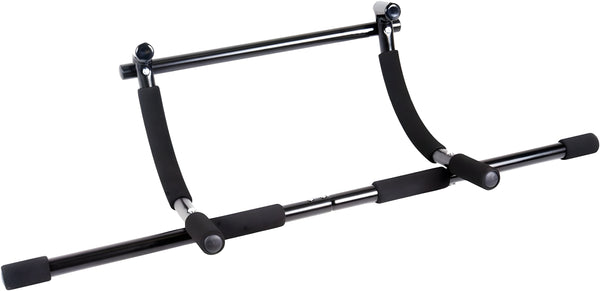Your Cart is Empty
March 18, 2024 4 min read
Pull ups are one of the most effective exercises for building strength and increasing mobility and flexibility. They have been around for centuries, and have remained a staple in many fitness routines due to their versatility and effectiveness. Pull up exercises target several different muscle groups, including your back, arms, shoulders, chest, and core.
Shop The Collection: Pull Up BarsThough pull ups are often associated with upper body strength, they can also provide significant benefits to your lower body as well. The act of lifting your body weight against gravity provides a challenge that will help you build strength and improve mobility in your hips, legs, and ankles. This can be especially beneficial for athletes, dancers, and those who need to move quickly and fluidly through space.
 Shop The Gear: CAP Barbell Xtreme Doorway Pull Up Bar, $27.99 USD
Shop The Gear: CAP Barbell Xtreme Doorway Pull Up Bar, $27.99 USD
In this article, we’ll discuss the benefits of pull up exercises, as well as how to incorporate them into your fitness routine. We’ll also provide some tips on how to safely and effectively perform pull ups to maximize their potential. Let’s get started!
Pull ups are often used by athletes and fitness enthusiasts to gain strength and power, but there are additional benefits to performing this type of exercise. Here are some of the key benefits of pull ups:
Now that we’ve discussed the benefits of pull up exercises, let’s look at how to perform them correctly.
The most important thing to remember is that pull ups can be dangerous if not performed correctly. Make sure to use proper form when performing pull ups, and keep these tips in mind:
There are a variety of pull up exercises that you can incorporate into your fitness routine. Here are some examples:
Pull up exercises are a great way to build strength, increase flexibility, and improve mobility. Though they may seem intimidating at first, with practice and dedication, anyone can master the art of the pull up. Just remember to start slow, focus on proper form, and progress gradually. Incorporating pull up exercises into your fitness routine can provide numerous physical and mental benefits.